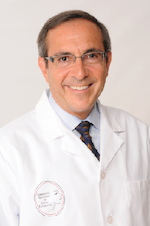I have always been a huge advocate of organized dentistry, and never before in my 40-plus-year career has it been more important. The American Dental Association (ADA), with all of its state and local affiliates, has recently helped dentists secure personal protective equipment (PPE), advocated for paycheck protection program and other funds for dental practices, worked with local health boards to make sure dentists are prioritized to receive the vaccine and approved to administer vaccinations, and so much more.
Another important service from the ADA is the ADA Health Policy Institute (HPI), which is under the direction of the very talented Dr. Marko Vujicic. According to the ADA website, HPI aims to be a thought leader and trusted source for critical policy knowledge related to the US dental care system. HPI achieves this by generating, synthesizing, and disseminating innovative research on a variety of topics that are relevant to policymakers, health-care advocates, and providers. The key issues that HPI focuses on include health policy reform, access to care, the workforce, care utilization and benefits, education, and oral health outcomes.
Follow the science
HPI launched an ongoing study during the pandemic titled COVID-19: Economic Impact on Dental Practices. This study has been measuringClearly, DSO practices are doing a better job at attracting patients during the pandemic (figure 1). Solo practices should look to improve their social media presence and investigate other cost-effective ways to reengage existing patients and attract new ones. Get on the phone, let your patients know that your office is among the safest environment to visit right now and they should stop putting off needed care.
Dental offices made some significant financial decisions in 2020, which seemed to be fairly consistent across different types of offices, especially in the area of raising fees. It will be interesting to see how the combination of increased fees and decreased patient volume will play out.
COVID clenching
I find these to be the most interesting statistics of all, as this has a directData-driven dentistry
Let’s contrast some of the statistics in figure 2 with findings from an internal American Academy of Facial Esthetics (AAFE) member study thatIt’s time to follow the numbers to build your practice. The continuing comparative data clearly shows the need, especially for solo practices, to add highly profitable, elective, recession-proof services in order to increase patient volume and practice production. Additionally, with the dramatic increase of bruxism, TMD, and orofacial pain, there will be a need for effective trigger-point therapy and therapeutic Botox treatment for years to come.
REFERENCES
- COVID-19: Economic impact on dental practices. Week of February 15 results. https://surveys.ada.org/reports/RC/public/YWRhc3VydmV5cy02MDJiZTU1N2M1MDZhNDAwMTFkNzgwMmUtVVJfM3BaeGhzWm12TnNMdjB4
- Malcmacher L. ‘COVID clenching’ patients and your practice. Dental Economics. December 1, 2020. https://www.dentaleconomics.com/practice/article/14189625/covid-clenching-patients-and-your-practice
- AAFE Member internal study, February 2021. American Academy of Facial Esthetics. https://www.facialesthetics.org/











